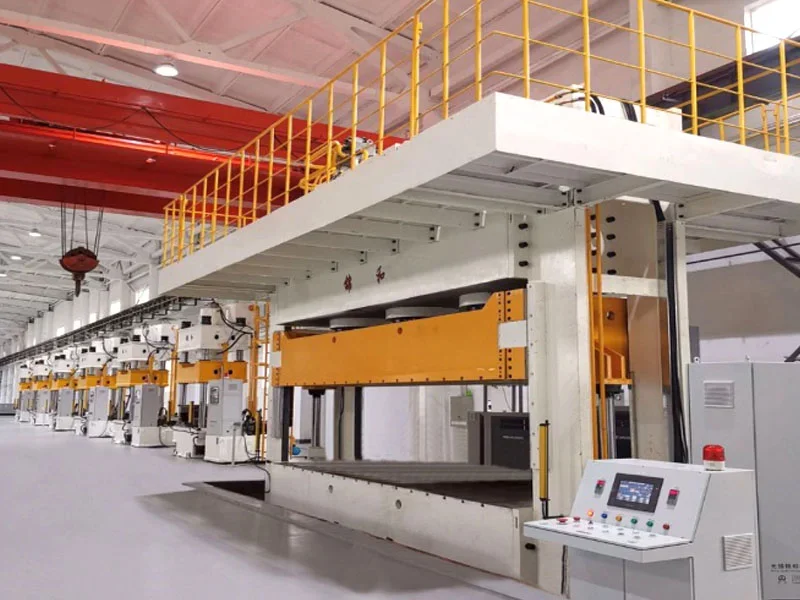Compression moulding presses have become increasingly popular in various industries due to their versatility and efficiency. These machines are capable of producing high-quality products with consistent results, making them a preferred choice for manufacturers across different sectors. From automotive to aerospace, compression moulding presses have found their applications in a wide range of industries. In this article, we will explore the various applications of compression moulding presses and how they are revolutionizing the manufacturing process.
Industries That Utilize Compression Moulding Presses
Compression moulding presses are widely used in various industries due to their versatility and efficiency. One industry that extensively utilizes compression moulding presses is the automotive industry. These presses are instrumental in manufacturing a wide range of car parts, including bumpers, dashboards, and interior trims. The ability of compression moulding presses to produce high-quality and precise components makes them an ideal choice for automakers.
Another industry that benefits from compression moulding presses is the aerospace sector. In this field, these machines are used to create lightweight yet strong composite materials for aircraft components such as wing panels and fuselage sections. The precise control provided by these presses ensures that the final products meet stringent quality standards required for aviation applications.
The electrical and electronics industry also relies on compression moulding presses for the production of electrical insulation components like circuit breakers and switchgear bushings. The ability of these machines to handle high volumes while maintaining excellent dimensional accuracy makes them indispensable in this sector.
Furthermore, the consumer goods industry utilizes compression moulding presses for producing a wide array of products such as kitchenware, storage containers, and toys. These machines enable manufacturers to achieve consistent product quality while keeping costs under control.
Numerous industries rely on compression moulding presses due to their ability to produce high-quality components efficiently. From automotive and aerospace sectors to electrical/electronics industry and consumer goods manufacturing, these versatile machines play a crucial role in meeting diverse market demands across various industries.

Advantages of Using Compression Moulding Presses
Compression moulding presses offer several advantages that make them a popular choice in various industries. One major advantage is their ability to produce high-quality and consistent parts. The compression process ensures that the material is evenly distributed, resulting in uniformity throughout the product.
Another advantage is the versatility of compression moulding presses. They can be used with a wide range of materials, including composites, rubber, plastics, and even metals. This makes them suitable for diverse applications across industries such as automotive, aerospace, electrical, and consumer goods.
In addition to producing consistent parts with different materials, compression moulding presses also allow for complex shapes and intricate designs. The molds used in these presses can be customized according to specific requirements, enabling manufacturers to create unique products that meet customer demands.
Compression moulding presses are known for their durability and longevity. These machines are designed to withstand continuous use under high pressure conditions without compromising performance or quality.

Common Types of Materials Used in Compression Moulding
When it comes to compression moulding, a wide range of materials can be used depending on the specific application and desired end product. Here are some common types of materials that are commonly used in compression moulding:
1. Thermosetting Plastics: These plastics undergo a chemical change during the curing process, which makes them heat-resistant and rigid. Examples include phenolic resins, melamine formaldehyde, and epoxy resins.
2. Rubber: Natural rubber or synthetic rubber compounds are often used in compression moulding processes to create various products such as gaskets, seals, O-rings, and automotive parts.
3. Composites: Composite materials consisting of fibers (such as carbon fiber or fiberglass) embedded in a matrix (such as epoxy resin) can be compressed molded to create lightweight yet strong components for industries like aerospace and automotive.
4. BMC/SMC: Bulk molding compound (BMC) and sheet molding compound (SMC) are mixtures of thermoset resin with chopped glass fibers and other additives. These materials offer excellent strength-to-weight ratio properties suitable for electrical enclosures, automotive body panels, and appliance components.
5. Ceramics: Compression moulding can also be applied to ceramics where powdered ceramic material is compacted under high pressure before undergoing firing or sintering to achieve the final shape.
Different industries require specific material properties from their compression-moulded products – whether it's heat resistance, durability, flexibility or electrical conductivity – so selecting the right material is crucial for achieving optimal results.
Conclusion
Compression moulding presses play a vital role in various industries, offering a wide range of applications and benefits. From automotive to aerospace, from consumer goods to electrical components, these presses are indispensable in the manufacturing process.
The ability to mold complex shapes with high precision and consistency makes compression moulding presses highly sought after. They provide cost-effective solutions for producing large quantities of parts while maintaining excellent quality standards.
Additionally, the versatility of materials used in compression moulding adds another layer of value. Whether it's rubber, thermoplastics, composites or other materials, these presses can handle them all. This adaptability allows manufacturers to explore new possibilities and meet the unique requirements of different industries.
Furthermore, the advantages offered by compression moulding presses cannot be overlooked. The efficient use of raw materials reduces waste and contributes to sustainability efforts. The quick cycle times increase productivity and enable faster production rates.
Moreover, the ability to create intricate designs with minimal post-processing saves time and resources. This not only enhances efficiency but also ensures consistent product quality throughout the manufacturing process.
Compression moulding presses have revolutionized various industries by facilitating efficient production processes and enabling manufacturers to meet increasing demands effectively. With their versatility, precision molding capabilities, cost-effectiveness,and material compatibility; these machines are poised for continued growth across different sectors.
